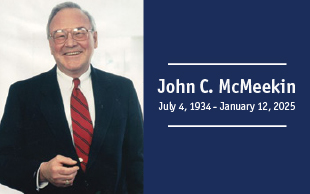Program Design: Delaware Valley Earth Force Engages Youth in the Process
Program design is by no means a new concept to the nonprofit sector.
But for time- and resource-constrained organizations, investing in the program design process often poses a challenge. In addition, though input from the target population is critical to the program design process, some nonprofits find that obtaining honest client feedback is difficult without the assistance of a neutral party.
It was this last concern, in particular, that led Delaware Valley Earth Force (DVEF) to engage PHMC’s Targeted Solutions in the program design process for its Youth Leadership Team program. The project was partially subsidized by the William Penn Foundation through the Technical Assistance Matching Fund at PHMC.
“We were looking for a program design for our Youth Leadership Team that would incorporate input from not only our staff, but the youth we serve,” says Anne Rahn, executive director of DVEF, a local chapter of the national Earth Force school-based environmental learning program for youth. “It was very important for us that our youth leaders be involved in the process. Targeted Solutions, as an objective source, enabled us to really learn what they wanted to see in the program.”
In 2007, DVEF launched the Youth Leadership Team program as a vehicle for students to explore their interests in environmental leadership outside the classroom. Unlike DVEF’s general programming, which follows curricula and protocols developed by the national office, Youth Leadership Team had very few programmatic restrictions. This presented both challenge and opportunity for DVEF. Although the program’s fluid structure fostered innovation and experimentation, it also hindered efforts at future goal-planning and hampered fundraising efforts.
“Our goal was to give them a program design with enough structure that staff wouldn’t be required to re-invent the wheel every year,” says Targeted Solutions consultant Farrah Parkes, “yet still allow room for some flexibility and creativity in programming. We also felt the program needed to take into account best practices in youth development, as well as the current organizational realities, future growth potential and, most important, the youths’ goals and expectations of the program.”
“We now have a solid program design.”
Targeted Solutions executed a three-stage process: collection and analysis of data, facilitation of program planning sessions for staff and development of a program manual. The process began with research on youth leadership program models and an assessment of participants’ insight through a web-based survey and focus group. After analyzing and presenting the research findings, consultants facilitated a series of program planning sessions to help staff make decisions and develop consensus for the new program design. The resulting manual provided a framework to guide staff in the process of program implementation while allowing them flexibility regarding program-specific activities and content areas.
“We now have a solid program design,” says Rahn. “And there were quite a few bonuses that came along with the guide, such as a logic model, forms we can use for our students, recruitment recommendations and referral resources. This was really helpful for us.”
For more information, visit the Targeted Solutions website.





